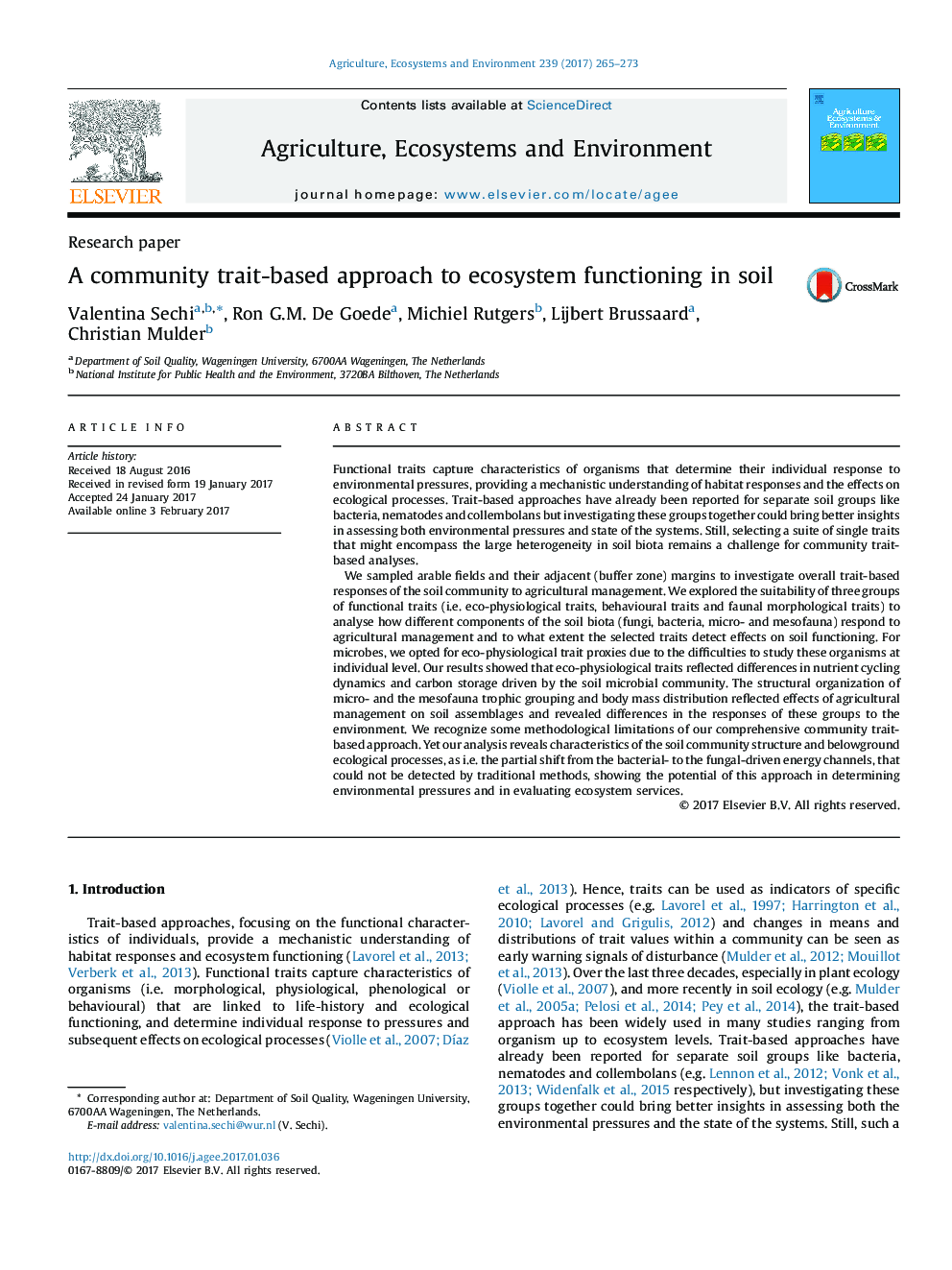| Article ID | Journal | Published Year | Pages | File Type |
|---|---|---|---|---|
| 5537933 | Agriculture, Ecosystems & Environment | 2017 | 9 Pages |
Abstract
We sampled arable fields and their adjacent (buffer zone) margins to investigate overall trait-based responses of the soil community to agricultural management. We explored the suitability of three groups of functional traits (i.e. eco-physiological traits, behavioural traits and faunal morphological traits) to analyse how different components of the soil biota (fungi, bacteria, micro- and mesofauna) respond to agricultural management and to what extent the selected traits detect effects on soil functioning. For microbes, we opted for eco-physiological trait proxies due to the difficulties to study these organisms at individual level. Our results showed that eco-physiological traits reflected differences in nutrient cycling dynamics and carbon storage driven by the soil microbial community. The structural organization of micro- and the mesofauna trophic grouping and body mass distribution reflected effects of agricultural management on soil assemblages and revealed differences in the responses of these groups to the environment. We recognize some methodological limitations of our comprehensive community trait-based approach. Yet our analysis reveals characteristics of the soil community structure and belowground ecological processes, as i.e. the partial shift from the bacterial- to the fungal-driven energy channels, that could not be detected by traditional methods, showing the potential of this approach in determining environmental pressures and in evaluating ecosystem services.
Related Topics
Life Sciences
Agricultural and Biological Sciences
Agronomy and Crop Science
Authors
Valentina Sechi, Ron G.M. De Goede, Michiel Rutgers, Lijbert Brussaard, Christian Mulder,
